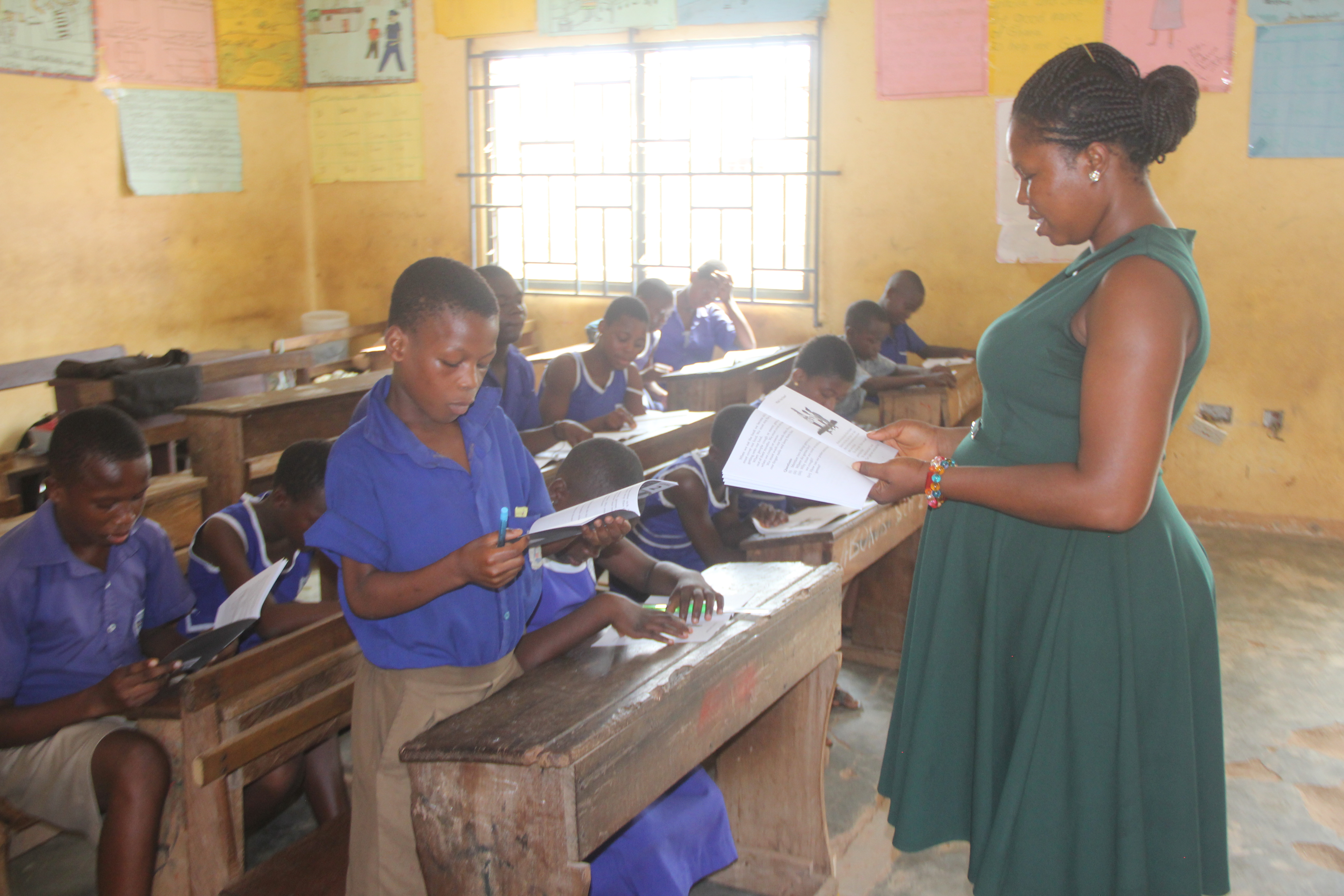Scaling Up Targeted Instruction in Ghana
Abstract
The government of Ghana will be scaling up targeted instruction to 10,000 primary schools, reaching over two million students across the country.
Reaching low-performing students at the level where they are, an approach known as targeted instruction, has improved learning outcomes and closed learning gaps in multiple contexts. In Ghana, where large gaps in learning levels exist in early grades, the government previously conducted a national pilot and evaluation of a targeted instruction program with IPA but found many teachers didn't comply with the program. Building on this research, IPA, UNICEF, and government partners evaluated the effect of increased management engagement on program compliance in the Strengthening Accountability to Reach All Students (STARS) program. The Ministry of Education has now incorporated the results of the STARS program into the Ghana Accountability for Learning Outcomes Project (GALOP), to scale up targeted instruction to 10,000 primary schools across the country over five years, with funding from the World Bank and the Global Partnership for Education (GPE).

The Challenge
Despite high enrollment rates, many children do not meet academic standards for their grade. Evidence from Ghana, Kenya, and India has shown that targeted instruction, which groups children by learning level, rather than age or grade, is effective in raising student learning outcomes in primary grades.
Ghana has high primary school enrollment rates, yet not all students are learning. According to the 2016 National Education Assessment, 91 percent of Ghanaian children were enrolled in primary school.1 However, many pupils are struggling to master classroom material, and are lacking the foundational skills they need to perform well in higher grades. Based on data collected in the 2018 National Education Assessment, average English and math scores for P4 and P6 students were less than 50 percent.2
Targeted instruction is a pedagogical approach that tailors instruction at the level of the student’s current knowledge instead of the grade-level of the official curriculum. An evaluation of the Teacher Community Assistant Initiative (TCAI) targeted instruction intervention found that targeted instruction had positive effects on learning even though take-up of the program was low among teachers.
Evidence from India has also shown that grouping children by level, rather than age or grade, and teaching using engaging level-appropriate methods and materials—globally being referred to as Teaching at the Right Level—is effective in raising student learning outcomes in primary grades. This evidence has inspired many countries in Africa, including Ghana, to learn from and adapt the approach to their context.
The Evidence
In Ghana, researchers evaluated whether additional managerial support from head teachers and circuit supervisors increased the likelihood that teachers implemented targeted instruction in their classrooms.
IPA partnered with researchers (Adrienne Lucas, Sabrin Beg, and Anne Fitzpatrick), the Ghana Education Service (GES), the National Teaching Council (NTC), the National Council for Curriculum and Assessment (NaCCA), the National Inspectorate Board (NIB), and UNICEF to evaluate if stronger management support could increase the compliance of teacher-led targeted instruction.
The management support program, called Strengthening Teacher Accountability to Reach all Students (STARS), aimed to improve student achievement by enhancing head teachers’ and circuit supervisors’ roles in monitoring, providing feedback, motivating, and supporting teachers. The program took place in 20 districts, comprised of 140 study circuits, which are groupings of schools covered by a district supervisor. Within those circuits, 210 government schools were randomly assigned to one of three groups: schools receiving targeted instruction, schools receiving management training in addition to targeted instruction, and schools in the comparison group that did not receive either program during the study period.
According to preliminary results, the STARS program increased student learning outcomes. Both targeted instruction and targeted instruction plus management training increased students’ combined math and English test scores by 0.11 standard deviations (SD). The program was effective in increasing math and English test scores, leading to 0.7 additional years of learning per US$100 spent for the targeted instruction group and 0.4 additional years of learning per US$100 spent for the targeted instruction plus management training group.
The Impact
The initial results from the evaluation have led to the first African government-led planned scale-up of targeted instruction to 10,000 primary schools across Ghana, reaching over two million students.
In response to initial findings from the evaluation, the Ministry of Education has incorporated targeted instruction into the Ghana Accountability for Learning Outcomes Project (GALOP), a US$170 million fund from the World Bank and Global Partnership for Education aimed at improving the quality of education for more than two million children in low-performing primary schools in Ghana. As part of GALOP, targeted instruction is expected to be scaled up to 10,000 primary schools and over two million children across the country over five years, the first scale-up of the targeted instruction model led by an African government.
Directly aligning with the Ghana Ministry of Education's 2018-2030 Education Sector Plan, the scale-up will be led and implemented by the same government agencies involved in the original STARS program, with IPA providing monitoring and evaluation support. GALOP highlights specific features of the STARS program in its scale-up plan, including targeted instruction, provision of teaching and learning materials, and school-based management, coaching, and support for teachers.
This research was made possible through the generous support of:
 |
 |
Sources
1Ministry of Education, Ghana Education Service, and National Education Assessment Unit, 2016. “Ghana 2016 National Education Assessment: Report of Findings”. https://www.globalreadingnetwork.net/sites/default/files/eddata/2016%20NEA%20Findings%20Report_17Nov2016_Public%20FINAL.PDF
2Ministry of Education, Ghana Education Service, and National Education Assessment Unit, 2018. “Ghana 2018 National Education Assessment: Report of Findings”.












